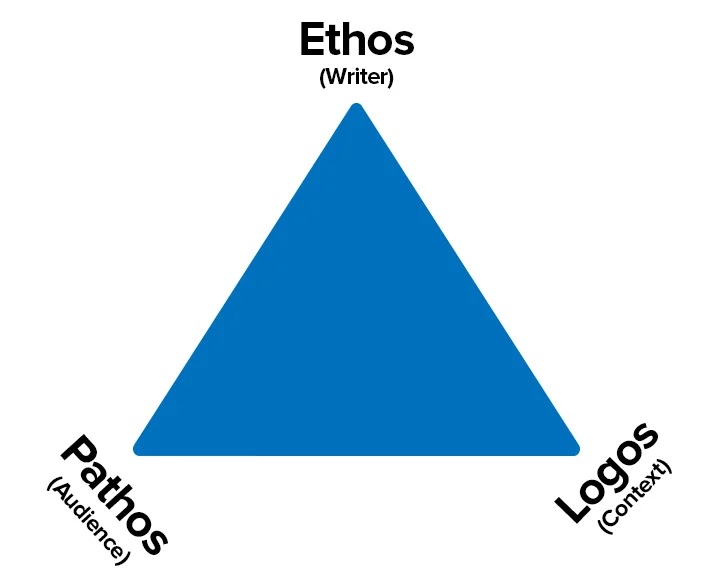The rhetorical triangle of communication generally refers to the three persuasive appeals, ethos, pathos and logos, proposed by Aristotle, one of the most celebrated scholars in the history of philosophy. Communication is more than just a mode of exchanging messages; it is an art of making people see things from different perspectives. In the current attention economy, where the amount of content being produced is far exceeding the engagement capacity, brands are struggling to obtain the attention of people. This is where we talk about the relevance of the rhetorical triangle.
- Ethos
Ethos means ‘ethics’ or ‘character’. It refers to the credibility and integrity of the speaker, which helps in building a good rapport before you even enter the phase of communication. Ethos should be created from the very beginning itself, as it helps in gaining the confidence of the people. A good reputation leads to trustworthiness. Convincing becomes easy when the audience trusts you.
- Pathos
Pathos refers to emotional appeal. You can convince the crowd by intentionally giving rise to specific emotions in order to incite the desired action. If you want to make people see the brand through your eyes, you have to share your perceptions with them. Accepting different points of view can be challenging. Perhaps storytelling is one of the many ways by which you can persuade your audience and build a quick and lasting connection with them.
- Logos
Logos means ‘logic’. It is one of the most essential trust-building factors. Persuasion becomes less complex when your words are carried by facts. People love numbers and charts as they bring conclusions faster than statements. Make sure your points are easy to comprehend. Questions are rare when facts are served. This also helps in creating a sense of reliability in the minds of the targeted audience.
Keep in mind these three appeals of communication both for brand-building and daily interpersonal talks. Don’t just communicate to speak, communicate to win.






